Eltako FUD71-230V Handleiding
Eltako
Niet gecategoriseerd
FUD71-230V
Bekijk gratis de handleiding van Eltako FUD71-230V (4 pagina’s), behorend tot de categorie Niet gecategoriseerd. Deze gids werd als nuttig beoordeeld door 47 mensen en kreeg gemiddeld 4.7 sterren uit 24 reviews. Heb je een vraag over Eltako FUD71-230V of wil je andere gebruikers van dit product iets vragen? Stel een vraag
Pagina 1/4

Wireless actuator
Universal dimmer switch
FUD71-230 V
30 100 845 - 3
Universal dimmer switch, power MOSFET up
to 400 W. Automatic lamp detection. With
adjustable minimum brightness and dimming
speed. With switching operation for light
alarm clocks, children's rooms and snooze
function as well as constant light regulation
and master-slave mode. Also with light
scene control by PC or wireless pushbuttons.
Encrypted wireless, bidirectional wireless
and repeater function are switchable. Only
0.7 watt standby loss.
Mounting in the 230 V power supply cord,
e.g. in false ceilings and lamps. 166 mm long,
46 mm wide and 31 mm high.
Universal dimmer switch for lamps up to
400 W, depending on ventilation conditions.
Dimmable energy saving lamps ESL and
dimmable 230 V LED lamps, additionally
depending on the lamps electronics.
Zero passage switching with soft ON and
soft OFF to protect lamps.
The brightness level is stored on switch-off
(memory).
In case of a power failure the switch position
and the brightness stage are stored and
may be switched on when the power supply
is restored.
Automatic electronic overload protection
and overtemperature switch-off.
Encrypted sensors can be taught in.
GB
Temperature at mounting location:
-20°C up to +50°C.
Storage temperature: -25°C up to +70°C.
Relative humidity:
annual average value <75%.
Only skilled electricians may install this
electrical equipment otherwise there is
the risk of re or electric shock!
valid for devices from production week
50/16 (see bottom side of housing)
You can switch on bidirectional wireless
and/or a .repeater function
Every change in state and incoming central
command telegrams are conrmed by a wire-
less telegram. This wireless tele gram can
be taught-in in other actuators, in universal
displays FUA55 and in the GFVS software.
The current dimming value is also displayed
in % in the GFVS-Software.
Function rotary switches
The upper rotary switch determines the
operation, whether automatic lamp
detection or special comfort positions
should work:
AUTO allows the dimming of all lamp types.
EC1 is a comfort position for energy saving
lamps, which which by design must be turned
on with an increased voltage so that they
switch on again in cold state when dimmed
down.
EC2 is a comfort position for energy saving
lamps, which by design won't switch on again
when dimmed down. Therefore Memory is
switched off in this position.
LC1 is a comfort position for dimmable 230 V
LED lamps, which by design won't be dimmed
down enough in the AUTO position (trailing
phase angle) and therefore has to be forced
to leading phase angle.
LC2 and LC3 are comfort positions for dim-
mable 230 V LED lamps like LC1 but with
different dimming curves.
In positions EC1, EC2, LC1, LC2 and LC3
inductive (wound) transformers may not
be used. In addition, the maximum number
of dimmable LED lamps may be lower by
design than in the AUTO position.
LC4, LC5 and are comfort positions for LC6
LED lamps like AUTO but with different dim-
ming curves.
PCT is a position for special functions which
were set up using the PCT14 PC Tool. The
PCT14 link is hooked up using the data
transformer DAT71.
The minimum brightness (fully dimmed down)
is adjustable with the middle % rotary
switch.
The dimming speed is adjustable using the
lower dimming speed rotary switch.
The pushbuttons can be either taught-in
as direction pushbuttons or universal
pushbuttons: As direction pushbutton
'switch on and dim up' is on one side and
'switch off and dim down' on the other side.
A double-click on the switch on side triggers
the automatic dimming up to full brightness
with dim speed time. A double-click on the
switch off side triggers the snooze function.
The children's room function is triggered on
the switch on side. As a universal pushbutton
the direction change is made by briey
releasing the push button.
Switching for light alarm clocks: An appro-
priately taught-in timer wireless signal starts
the wake-up function by switching on the
lighting at lowest brightness and slowly
dimming up to maximum brightness over a
period of 30 minutes. The dimming process
is stopped by tapping briey, e.g. on the
hand-held transmitter. In the settings EC no
switching for light alarm clocks is possible.
Switching operation for children's rooms
(universal switch or direction switch on the
switch-on side): If the light is switched on
by holding down the pushbutton, it starts at
the lowest brightness level after approx. 1
second and dims up slowly as long as the
pushbutton is held down without modifying
the last stored brightness level.
Snooze function (universal switch or
direction switch on the switch-off side):
With a double impulse the lighting is
dimmed down from the current dimming po-
sition to the minimum brightness level and
switched off. The current dimming position
as well as the adjustable minimum bright-
ness level determine the dimming time
(max. = 60 minutes) which can be reduced
as required. It can be switched off at any
time by short-time control commands dur-
ing the lighting is dimmed down.
Light scenes on the PC are set and
retrieved using the Wireless Visualisation
and Control Software GFVS. One or several
FUD71 devices must be taught in on the PC
as dimming switches with percentage
brightness values.
A resettable staircase time switch function
with RV = 2 minutes can be called by a push-
button taught-in as a staircase pushbutton.
Brightness level settings can be called
during teach-in with single light scene
pushbuttons. A twilight pushbutton can be
implemented using a taught-in FAH. Switch-
on can be performed dependent on motion
and brightness with up to 4 FBH devices.
Wireless pushbutton Central ON:
The impulse length is not important. The
pushbutton switches on with the memory
value.
Wireless pushbutton Central OFF:
The impulse length is not important.
The pushbutton switches off.
Staircase light pushbutton:
The staircase light pushbutton switches on
with a memory value and starts an RV time
of 2 minutes at the end of which the device
switches off. Press the pushbutton again to
restart.
FTK as NO contact:
When the window is opened, the light is
switched on. When the window is closed,
the light is switched off.
FTK as NC contact:
When the window is opened, the light is
switched off. When the window is closed,
the light is switched on.
Either a FBH or a FHD60 can be taught-in
as master:
FBH as Master: (automatic brightness con-
trol) When a wireless motion/brightness sen-
sor FBH is taught-in, the switching threshold
is dened by the lower rotary switch during
teach-in. The switching threshold switches
on the lighting with memory value depending
on the brightness (in addition to motion) (from
approx. 30 Lux in OFF position to approx.
300
Lux in ON position). When the FBH in taught-
in in the ON position, it is only evaluated as a
motion detector.
A return delay of 2 minutes is preset in the
FUD71.

By switching-off or dimming with pushbutton,
the FBH is deactivated. Central pushbutton,
scene pusbhbutton and 'dimming value' by
PC also lead to deactivation.
A short press on the switch-on side of the
direction pushbutton, the FBH is reactivated.
FBH as Slave: The FBH is only evaluated as
motion detector.
Semi-automatic motion detection with
taught-in FB65B wireless motion sensor
(factory setting): After switching on via
pushbutton, the 5 minutes delay time
starts, within this time the delay will restart
after each detected motion. 5 minutes after
the last detected motion it will switch off. If
a motion is detected 5 minutes after switching
off, it will automatically switch on again. After
this time only a pushbutton can switch on. The
pushbutton is allowed to switch off at any time,
then the motions are no more evaluated.
Fully automatic motion detection with
FB65B taught-in wireless motion sensor:
If the actuator should switch on automatically
when motion is detected, e.g. in rooms without
daylight, replug the jumper to 'active' on the
FB65B device. When motion is no longer
detected, the device switches off automati-
cally after the 5 minutes release delay time
expires. Press the pushbutton at any time to
switch the device on or off. When motion is
detected, the device switches on again
automatically.
FHD60 as Master: (automatic brightness
control off) When a wireless brightness and
twilight sensor FHD60 is taught-in, the
switching threshold is dened by the lower
rotary button during teach-in. The switching
threshold switches the lighting off
depending on the brightness. Switch-on is
only possible by pressing the push button.
FHD60 as twilight switch: (automatic bright-
ness control off) When a wireless bright-
ness and twilight sensor FHD60 is taught-in,
the switching threshold is dened by the
lower rotary switch during teach-in. The
switching threshold switches the lighting on
or off depending on the brightness (from
approx. 0 Lux in OFF position to approx.
50 Lux in ON position). If the brightness
threshold is under shot, switch-on uses the
memory value. Switch-off takes place at a
brightness of > 200 Lux.
FHD60 as twilight dimmer: (automatic
brightness control off) When a wireless
brightness and twilight sensor FHD60 is
taught-in, the minimum dimming value is
dened in % by the lower rotary switch. The
switching threshold is the value to which
the lighting is dimmed down in darkness
(OFF = minimum dimming value to ON =
maximum dimming value). If the brightness
undershoots a xed limit, switch-on takes
place at maximum dimming value. If the
brightness drops, the dimming value is also
reduced. When the brightness rises again,
the dimming value also increases.
If the brightness exceeds the xed limit, the
lighting is switched off.
Constant light control with FHD65:
(The automatic brightness control automat-
ically switches on when teaching-in of the
FHD65) The required brightness is adjusted
by a pushbutton, then the rst received
brightness value of the FHD65 is the target
brightness, it is maintained constant auto-
matically by the FUD71 by incoming bright-
ness values of the FHD65. After each
change in brightness (dimming) with push-
button, the subsequently received bright-
ness value of FHD65 will be the new target
brightness. If the target brightness is
adjusted with a 'direction pushbutton for
target brightness', this is xed, a change in
brightness with the pushbutton is then
overruled by the xed target brightness. If
additionally a FBH is taught-in as a slave, it
is switched on when motion and target
brightness are fallen short and switched off
when not in motion or target brightness is
exceeded.
By switching off with pushbutton, the auto-
matic control by FBH or FHD65 is disabled.
Central pushbutton, scene pushbutton and
'dimming value' by PC also lead to deactivation.
The automatic control is reactivead by a
short press on the switch-on side of the
direction button.
Storing of target brightness:
Press 'direction pushbutton for target
brightness' above. The current brightness
that has been sent from the FHD65 is stored.
Deletion of target brightness:
Press 'direction pushbutton for target
brighntess' below.
The red LED accompanies the teach-in
process and indicates control commands in
operation by ashing briey.
The green LED ashes briey when a con-
rmation telegram is sent.
Typical connection
Technical data
Incandescent and up to 400 W
halogen lamps 1)
230 V (R)
Inductive up to 400 W 2)3)
transformers (L)
Electronic up to 400 W 2)3)
transformers (C)
Dimmable energy up to 400 W 5)
saving lamps ESL
Dimmable LEDs up to 400 W 5)
Max./min. temperature +50°C/-20°C 4)
at mounting location
Standby loss (activ power) 0.7 W
1) For lamps with a maximum of 150 W.
2)
Per dimmer it is only allowed to use max. 2 inductive
(wound) transformers of the same type, furthermore
no-load operation on the secondary part is not
permitted. Possibly the dimmer switch will be de-
stroyed! No load-switching-off on the secondary part
is allowed. The parallel operation of inductive (wound)
and capacitive (electronic) transformers is not allowed!
3)
When calculating the load 20% loss has to be con-
sidered for inductive (wound) transformers and 5%
loss in addition to the lamp load.
4)
Affects the maximum switching power.
5)
Usually applies for dimmable energy saving lamps and
dimmable 230 V LEDs. Due to differences in the lamps
electronics, there may be limited dimming range,
switch on and off problems dependent on the manu-
facturer and a restriction on the maximum number of
lamps; especially if the connected load is very low (for
5 W-LEDs). The comfort positions EC1, EC2, LC1, LC2
and LC3 optimize the dimming range, which, however,
only gives a maximum power up to 100 W. No inductive
(wound) transformers may be dimmed in these comfort
positions.
Teaching-in wireless sensors in wireless
actuators
All sensors must be taught-in in the
actuators so that they can detect and
execute commands.
Teaching-in actuator FUD71-230 V
The teach-in memory is empty on delivery
from the factory. If you are unsure
whether the teach-in memory contains
something or not, you must rst clear
the memory contents completely:
Set the middle rotary switch to CLR. The
LED ashes at a high rate. Within the
next 10 seconds, turn the upper rotary
switch three times to the right stop (turn
clockwise) and then turn back away from
the stop. The LED stops ashing and
goes out after 2 seconds. All taught-in
sensors are cleared.
Clear individual taught-in sensors in the
same way as in the teach-in procedure,
except that you set the middle rotary
switch to CLR instead of LRN, and
operate the sensor. The LED previously
ashing at a high rate goes out.
Clear device conguration:
Set the middle rotary switch to CLR.
The red LED ashes at a high rate. Within
the next 10 seconds, turn the upper rotary
switch six times to the left stop (turn anti-
clockwise) and away again. The red LED
goes out. The factory settings are restored.
Teaching-in sensors:
A total of 120 memory locations are
available.
1. Set the top rotary switch to the required
teach-in function:
AUTO = timer as wake-up light;
Teach-in FHD65, FHD60 or FBH as master.
EC1 = 'central off';
Teach-in second FBH, FB65B as slave.
EC2 = universal switch;
Teach-in third FBH, FB65B as slave.
LC1 = 'central on';
Teach-in fourth FBH, FB65B as slave.
LC2 = Teach in direction pushbutton,
direction pushbutton are automatically
taught-in fully when pressed. Depending
on where the button is pressed, the
functions for switch-on and dim-up are

dened on one side and switch-off and
dim-down on the other side.
Teach in FTK and Hoppe window handle
as NO contact;
LC3 = teach in sequential light scene
push button, a pushbutton or half of a
double pushbutton is assigned auto-
matically.
Teach in FTK and Hoppe window handle
as NC contact.
LC4 = Teach in 4-way direct light scene
pushbuttons, a complete pushbutton
with double rocker is assigned auto-
matically.
LC5 = Teach-in single light scene push-
buttons.
Teach in FHD60 as twilight switch.
LC6 = Teach in staircase light switch;
Teach in FHD60 as twilight dimmer
PCT = Teach-in rotary switch and GFVS,
this automatically switches on and
sends conrmation telegrams.
Teach-in dimming values of FFD;
Teach-in 'direction pushbutton for
target brightness.
2. Set the middle rotary switch to LRN.
The LED ashes at a low rate.
3. Operate the sensor to be taught-in. The
LED goes out.
To prevent unintentional teach-in, turn
the rotary switch back to LRN for every
teach-in process. The LED ashes at a
slow rate.
You can teach in unencrypted and
encrypted sensors.
Teach in encrypted sensors:
1. Set the middle rotary switch to LRV.
The red LED ashes at a high rate.
2. Within 120 seconds, enable sensor en-
cryption. The red LED goes out.
Caution: Do not switch off the power
supply.
3. Then teach in the encrypted sensor as
described in 'Teaching-in sensors'.
To teach in other encrypted sensors, turn
the middle rotary switch briey away
from position LRV and then turn it to 1.
With encrypted sensors, use the 'rolling
code', i.e. the code changes in each tele-
gram, both in the transmitter and in the
receiver.
If a sensor sends more than 50 tele-
grams when the actuator is not enabled,
the sensor is no longer recognised by the
enabled actuator and you must repeat
teach-in as 'encrypted sensor'. It is not
necessary to repeat the function teach-in.
Saving light scenes
Up to four brightness values retrievable with
a direct light scene pushbutton can be saved.
1. Turn the upper rotary switch to the appro-
priate operating mode AUTO, EC or LC.
2. Adjust the required brightness level with a
previously taught-in universal or direction
switch.
3. Within 60 seconds, press one of the four
rocker ends of the previously taught-in
direct light scene pushbutton for longer
than 3 seconds but less than 10 seconds to
save the brightness value.
4. Repeat from point 2 to save further
directly retrievable light scenes.
Retrieving light scenes
Up to four brightness values are retrievable
using a direct light scene pushbutton (push-
button with double rocker, top left = light
scene 1, top right = light scene 2, bottom left
= light scene 3 and bottom right = light
scene 4) and/or using a sequential light
scene pushbutton (pushbutton or one half
of a double push button, press top = next
light scene, press bottom = previous light
scene).
Switch on repeater: The repeater is switched
off in the factory setting. In deenergised
state turn the middle rotary switch to CLR
and the lower rotary switch to ON. Switch on
the power supply. The red LED lights up to
two seconds. The repeater is switched on.
Switch off repeater: In deenergised state
turn the middle rotary switch to CLR and the
lower rotary switch to OFF. Switch on the
power supply. The red LED lights up to 0.5
seconds. The repeater is switched off.
Switch-on conrmation telegrams:
For deliveries ex-works the conrmation
telegrams are switched-off. Set the middle
rotary switch to CLR. The red LED ashes
nervously. Now within 10 seconds turn the
upper rotary switch 3 times to the left
(anticlockwise) and then back away.
The red LED goes out and the green LED
lights up for 2 seconds. The conrmation
telegrams are switched-on.
Switch-off conrmation telegrams:
Set the middle rotary switch to CLR.
The LED ashes nervously. Now within 10 sec-
onds
turn the upper rotary switch 3 times to
the left (anticlockwise) and then back away.
The red LED goes out immediately. The con-
rmation telegrams are switched-off.
Master-slave mode:
Activate FUD71 as master and teach in all
FUD71 slaves simultaneously:
1. Switch off the power supply to all FUD71
devices (masters and slaves).
2. On the FUD71 master, turn the upper rotary
switch to AUTO, the middle rotary switch to
LRN and the lower rotary switch to ON.
3. On all FUD71 slaves, turn the upper rotary
switch to AUTO, the middle rotary switch to
min and the lower rotary switch to max.
4. Switch on the power supply to all FUD71
devices (masters and slaves) simultaneously.
The red LED lights up for 0.5 seconds and
the lamp of the FUD71 master switches to
maximum brightness. After approx. 2 sec-
onds, the green LED on the FUD71 master
lights up briey and a teach-in telegram is
sent. After the teach-in telegram is received
by FUD71 slave, the lamp on the FUD71
slave switches on at maximum brightness.
5. Set all FUD71 devices (masters and slaves)
to the same operating mode, minimum
brightness and dim speed.
Deactivate FUD71 as master:
In deenergised state turn the middle rotary
switch to LRN and the lower rotary switch to
OFF. Switch on the power supply. The red
LED lights up to 0.5 seconds. The Master-
telegrams and conrmation telegrams are
switched off.
Teach in direction pushbutton in FUD71
slave (only if required):
Turn the upper rotary switch to LC2. Turn
the middle rotary switch to LRN. The LED
ashes at a low rate. Press the push button.
The LED goes out.
When pressed, a rocker is completely
taught-in automatically. Where you press
rst is then dened as switch-on. The other
side automatically becomes switch-off.
Function of slave direction pushbutton:
Quit slave mode as follows:
Press long on the switch-on side to dim up
to the required value.
Press long on the switch-off side to dim
down to the required value.
Double-click on the switch-on side to dim
automatically to maximum brightness.
Press briey on the switch-off side to
switch off.
Press briey on the switch-on side to
change back to slave mode.
If the FUD71 master was activated by a cen-
tral command, the FUD71 slave changes im-
mediately to slave mode.
Use the data transformer DAT71 to create a
link to a PC running the PCT14 software.
Congure FUD71:
The following points can be congured using
the PC PCT14 tool:
■ Teach in buttons with single or double click
■ Behaviour after power failure
■ Minimum and maximum brightness
■ Memory
■ Dimming speeds
■ Send dimming value in %: ON or OFF
■ Send pushbutton telegram ON (0x70) and
OFF (0x50): OFF or ON
■ Switch-on/off speed
■ Acknowledgement telegrams
■ Parameters for the operation with FHD60,
FHD65 and FBH
■ Parameters for operating as clock
■ Parameters for operating as staircase
time pushbutton
■ Add or change sensors
Saving light scenes:
Use the PCT14 PC Tool to congure the fol-
lowing parameters:
Conrmation ash when scenes are saved:
ON or OFF.
Light alarm circuit:
Use the PCT14 PC Tool to congure the fol-
lowing parameters: Maximum brightness:
50 to 100%.
Runtime: 1 to 255 minutes (factory setting
30 minutes).
Children's room circuit:
Use the PCT14 PC Tool to congure the
following parameters: Save memory value:
Product specificaties
| Merk: | Eltako |
| Categorie: | Niet gecategoriseerd |
| Model: | FUD71-230V |
Heb je hulp nodig?
Als je hulp nodig hebt met Eltako FUD71-230V stel dan hieronder een vraag en andere gebruikers zullen je antwoorden
Handleiding Niet gecategoriseerd Eltako
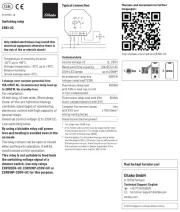
14 April 2025
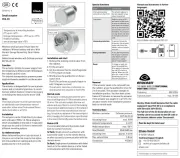
14 April 2025

13 Maart 2024

21 Februari 2024

21 Februari 2024

21 Februari 2024

21 Februari 2024

20 Februari 2024

20 Februari 2024

20 Februari 2024
Handleiding Niet gecategoriseerd
- Primus
- MyHummy
- Livarno
- Prestigio
- Emeril Lagasse
- Reflexion
- CDA
- Satisfyer
- ESX
- STI
- Raijintek
- Karibu
- Black Hydra
- Magnima
- Lexar
Nieuwste handleidingen voor Niet gecategoriseerd

31 Juli 2025

31 Juli 2025

31 Juli 2025

31 Juli 2025
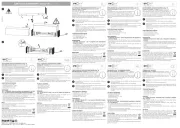
31 Juli 2025

31 Juli 2025

31 Juli 2025

31 Juli 2025
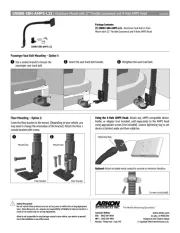
31 Juli 2025
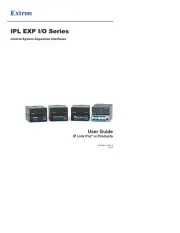
31 Juli 2025